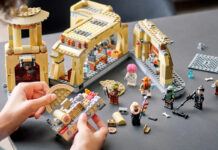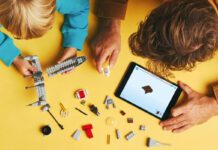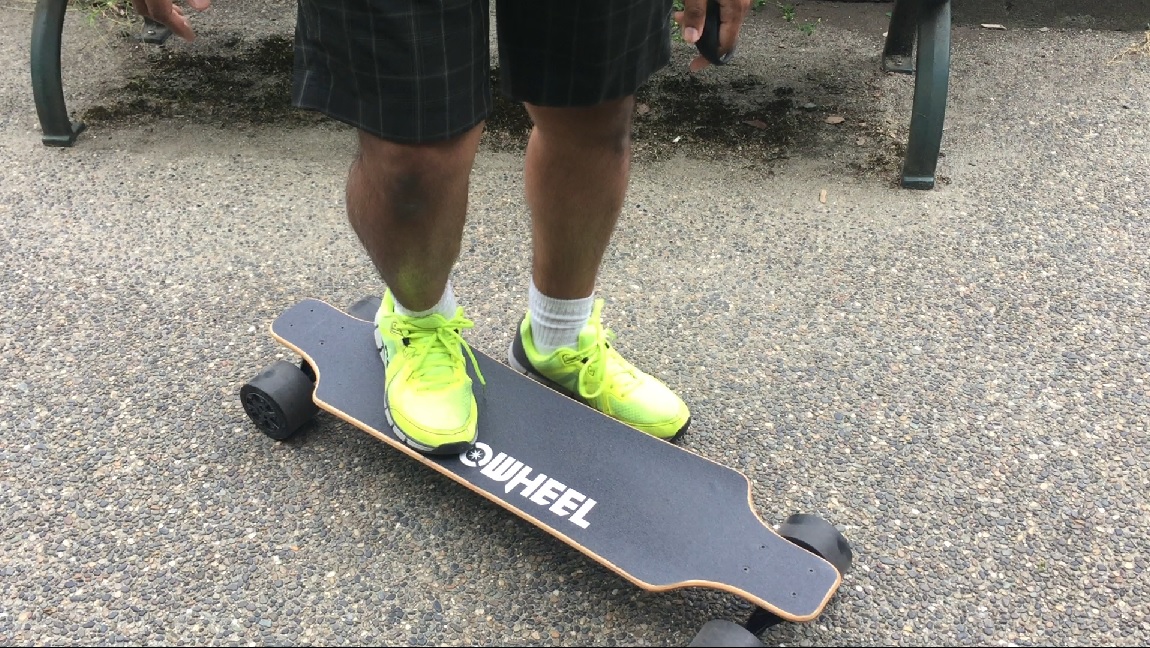
“How would you like to review the KooWheel D3X Gen 2 Electric Skateboard, Matt?” isn’t a question that I would have ever expected. Yet, when Editor Leo Bond came asking, it was an immediate yes. If you’ve ever wondered what it’s like for a dad in his mid-30s to experience skateboarding for the first time in 2 decades, you’ve come to the right place. Note that I also had some help from an expert rider, who was able to show me a number of things including how the board fares at top speed! Read on to learn more about the KooWheel skateboard.
KooWheel is not your ordinary skateboard
Let me first start by saying that I haven’t been on a skateboard since I was maybe 12, and even then, I wasn’t any good with it. My skateboarding exposure the past 20 years has mainly consisted of playing a lot of Tony Hawk Pro Skater, and watching the X-Games. Yet, my sense of curiosity (and an apparent lack of fear) made me really excited to get going on this.
The KooWheel has more of a longboard feel to it than your traditional skateboard. It has much fatter and wider wheels than a standard skateboard. With a top speed of around 40 km/h, I can’t imagine hurtling down the street that fast on a little skateboard with tiny wheels and living to tell you the story I’m telling you now.

This also isn’t just something you’ll be able to sling over your shoulder and walk around with like a regular skateboard. The Koowheel Electric Skateboard has some weight to it. I had “skateboard weight” on the mind when I picked the box up and was pretty shocked to find out that it weighs between 20-25 pounds. It definitely felt much heavier, but it may just be that the weight distribution makes it a very unique carry.
There is absolutely no assembly required with KooWheel
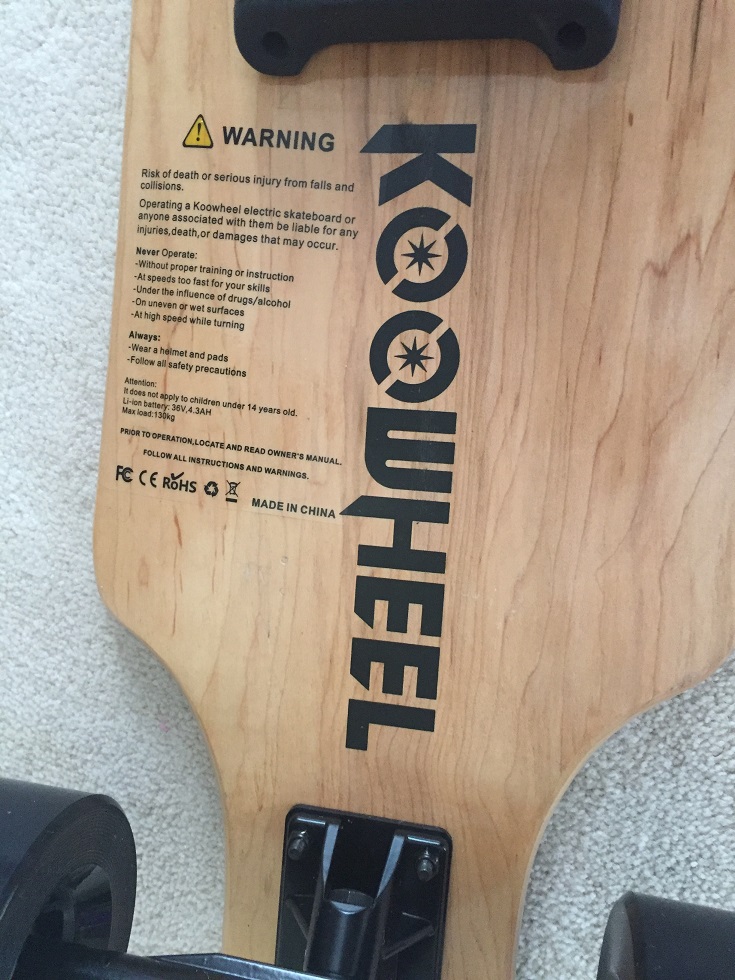 The nice thing about KooWheel is that it’s ready to play with out of the box. You may need to charge it before the maiden voyage, but it only takes about 2-2 ½ hours to charge, and should get you a range of approximately 50 km on a full charge according to the manufacturer.
The nice thing about KooWheel is that it’s ready to play with out of the box. You may need to charge it before the maiden voyage, but it only takes about 2-2 ½ hours to charge, and should get you a range of approximately 50 km on a full charge according to the manufacturer.
The heart of the KooWheel electric skateboard is its remote, which comes shipped already paired to your board. The remote looks a little bit like a Fitbit (or something to that effect), but isn’t flexible enough to fit around your wrist. It essentially slides around 4 fingers, and you operate it with your thumb. Previous versions of the KooWheel had the battery life indicator on the board itself. This one has the battery life indicators right on the remote. Charge the remote with a micro USB (a really small hookup is included), while the board has its own AC Adapter to plug into. The battery pack is underneath the skateboard, as is the power switch. Electronics at the bottom might help you figure out the types of terrain you should be taking this on. I skated on mainly sidewalks and walkways, careful to stay away from rough terrain and trails in order to preserve the components underneath, as well as the wheels.
The KooWheel is “Hub driven,” which means the motor is contained in the back wheels. The biggest benefit of this I’ve been told is that it may result in less maintenance overall. It is definitely quieter the other option (a belt-driven board.) It does, however, mean that you may also have slower up front acceleration and definitely a slower trek up hills as it doesn’t quite get as much torque as a belt driven board (these are boards where the wheels connect to a motors using a belt system on either wheel.)
KooWheel has also taken feedback from previous generation’s owners. One of the problems the old KooWheel ran into was that once the rear wheels were damaged and the polyurethane started chipping away, the motor could start to have problems if rocks and debris started making too much contact. This generation fixes that a bit with easy to replace back wheel covers. The battery housing has also been revamped and you can easily remove the battery out of its housing and charge it with the included AC Adapter.
Inside the box there’s also an extra set of back wheels, along with a rubber cap for the battery case and some tools to help tweak and tune up the tires.

How to use the KooWheel
KooWheel is easily capable of speeds of up to 40 km/h and carries an upper weight limit of about 285 lbs, which is slightly more than most Segway style devices.
At first, I suggest you practice using the remote, which turns on by pressing the centre button 3 times until you see the LCD lights flash. This powers on the low-speed mode. The light on the left advises you of the skateboard’s current battery life. The middle light tells you whether the board itself is synced up to the remote. The right light is the remote’s battery itself. It doesn’t really matter if you turn on the remote first or the board first, as they pair easily either way.
Once you get really good at what you’re doing, there is a top speed option in which the board itself goes much faster. To unleash this mode, you click the centre button 5 times.
There’s a button on the left side of the remote which toggles the forward and reverse commands. Moving on the board is done the same way regardless of direction. There’s a little thumbstick on the face of the remote. Flicking it upward gets the board moving, while flicking it backwards puts the brakes on. The speed in which you’re travelling is based on how much you jam the thumbstick down as it’s a pressure sensitive input. The slighter of a flick, the slower it goes.
Braking: One other thing you need to be aware of is that the brakes work by manual operation. I believe past KooWheels required you to hold down the thumbstick and keep it in place to keep the board in motion, and braking occurred when you took pressure off the stick. In this version, the board remains in motion for a limited period of time even if you’ve taken your thumb off the stick. It’ll decelerate, but it will take a little while when in motion, especially if you’re going down a hill. The brakes are pretty responsive though. As long as you flick the thumbstick back, the board will come to a pretty fast stop. Keep this in mind though if you ever fall off your KooWheel or lose your balance and want to keep your board from inching away. I thought there might be a range in which the board would automatically disconnect from the remote, but it was responsive and would reverse back to me as far as over 20 feet away.
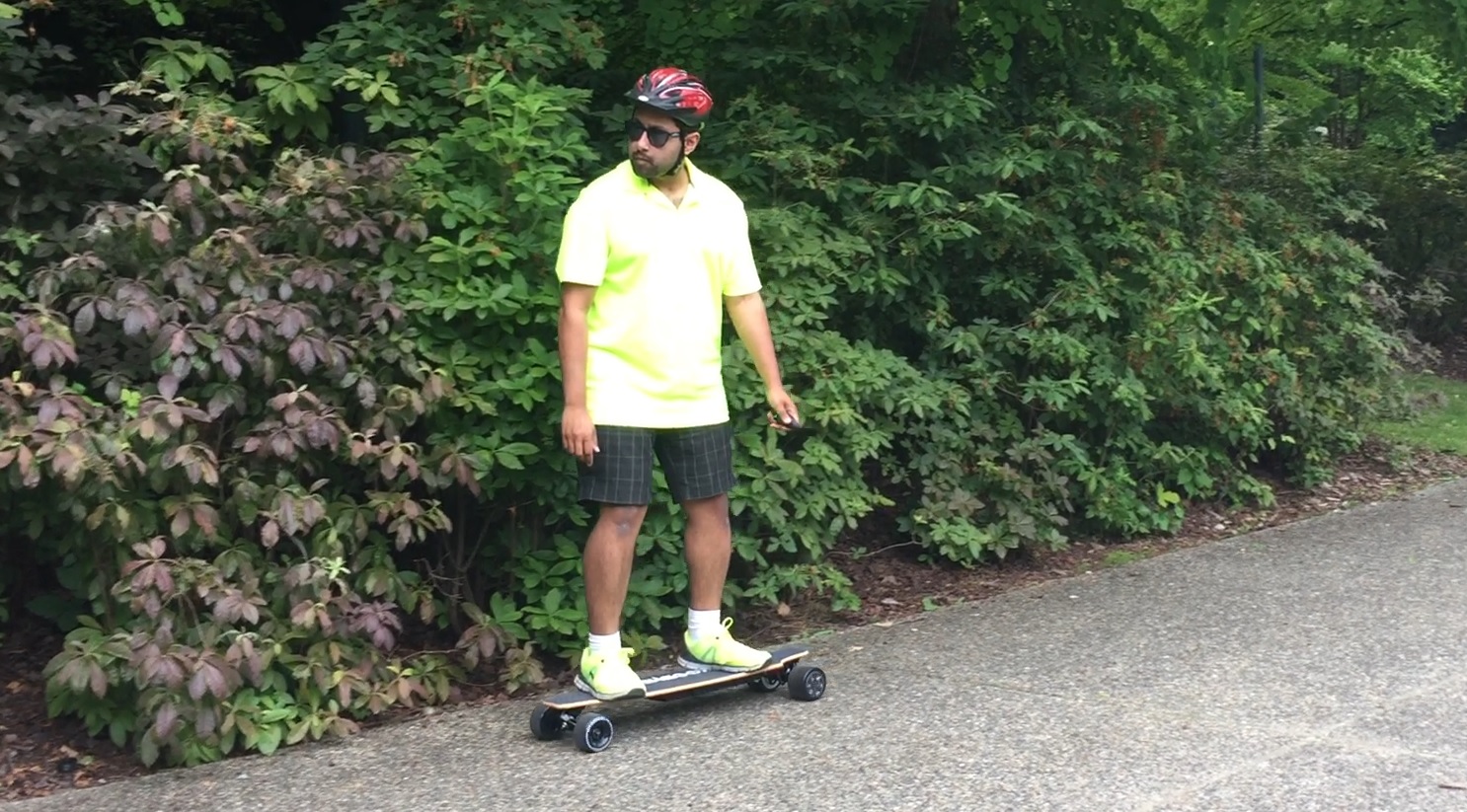
One of the things that I was really curious about was hills. I live in a particularly hilly part of my city, and basically all roads into and out of here are hills. I definitely am not concerned with how it performs downhill, but I was curious about what grades of hills the KooWheel was capable of handling. While I was able to get it to go up the hill fine, I admit that I had trouble steering the board and staying straight, so I couldn’t get it moving for a long period of time uphill. I’m fully taking ownership for this. It’s definitely the way I was balancing on the board, as I had no problem keeping the board straight going down hills, but kept veering to the right going up them.
The KooWheel is definitely made for urban terrain, and one of the things you may have some trouble with are stops/starts on hills and uneven sidewalks. I did have more than a couple different situations where I’d have to rock the board a little bit to create some motion to get it going up hills or gather enough momentum to start on an uneven sidewalk, but once in motion it handles everything just fine.
The KooWheel definitely isn’t child’s play
This thing is definitely not a toy. The price point for this should mostly deter that notion, but I believe that because of the nature of the way the remote works, it’s definitely not a kids’ toy. I had to turn my 4-year-old away in disappointment, but it was for the best. Despite it being fully automated and electric, you still do get quite a workout trying to stay balanced, or at least I did. If you’ve never been on an electric skateboard or a Segway-style device, I imagine your body has to somehow accustom itself to the motion. I thought it would be a lot like riding one of those movators at the airport, but it was anything but and took a little while to get used to.

Try as I might, I still never quite got the hang of balancing properly, which you’ll see in the video. The fastest I ended up being able to go was about 10-15 km/h. I admit I tried faster, but it will definitely take a lot more practice before I can get anywhere near the top speed.
How the KooWheel handles with an expert onboard
Fear not. In order to test those top speeds, I enlisted the help of an expert, Alex, who works at Best Buy Canada. He has a lot of experience with electric skateboards and actually uses one to commute to work on non-rainy days. When you view the video, you’ll see him take the board into top speed and test acceleration, brakes and hills. I also had him take the board itself through some of the paces that most avid electric skateboard enthusiasts look for. Here were the results of some of those tests:
- Top Speed Test: On flat terrains, Alex was able to take this board well over 40 km/h! In fact, the top speed he pushed the board to was 27.9 mph! That is just a shade under 45 km/h which is well faster than advertised!
- Battery swap ease: On the video, Alex shows you how easy it is to change the battery on the KooWheel. This generation of the KooWheel allows you to remove the battery from the board itself and charge it independently. If you are a commuter, for example, you will be able to lock the board up elsewhere and charge the battery at your work station without keeping the whole thing underneath your desk
- Flex Test: Alex does a flex test in the simplest way possible: Flexing weight up and down on the board repeatedly. With a 7 layer maple board deck, KooWheel does have some flex while remaining as sturdy as possible.
- Acceleration Test: We tested the board from a dead start on flat terrain to see how fast it gained speed. One thing to keep in mind is the board composition and motor type meant that it accelerated slower than a belt motor board, but after a short distance (about 10-15 metres) it was easily cruising toward its eventual top speed. You ca
- Break Test: You’ll see the board going from the top speed of 45 km/h to 0. You’ll also see how much distance the board needs to stop from that top speed. Be sure that when you ride a board like this, you’re maintaining a safe distance in order to brake. The stops from a top speed aren’t as immediate as the low speeds I was moving around on.
- Wheel Speed / Mode Swapping: On the video, you’ll quickly see the difference in wheel speed when swapping back and forth between the low speed and top speed modes.
- Hill Test: We took the board up a fairly standard sized hill. While KooWheel can handle hills, hub driven motors don’t tend to get as much torque as belt driven ones, and while it will get you up the hill fast enough, it won’t zip you around up the hill as quickly as it does on flatter terrain.
I can’t begin to tell you how much fun I had with the KooWheel D3X Gen 2 Electric Skateboard. It’s definitely something unique and something I’d never done before, and I’m a bit disappointed I’ve got to give it back. Using the KooWheel this Summer to get to and from work (or from place to place) could be an absolute blast.
This is a very unique one to add to your list, and I think those of you looking for an electric skateboard (or a fun new plaything this summer) will definitely enjoy what KooWheel has brought to the table here.
The KooWheel D3X Gen 2 Electric Skateboard is now available online only at BestBuy.ca


